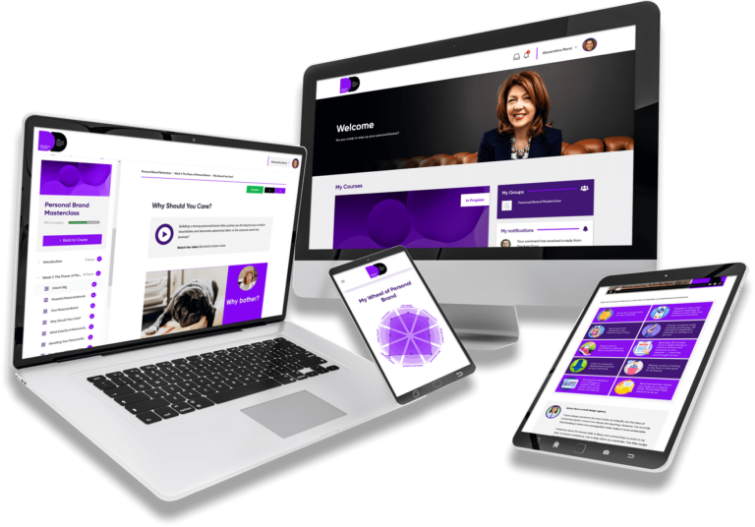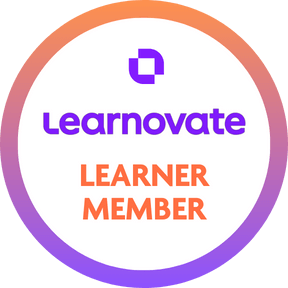How to turn your passive online training into an active learning experience

We’re firm believers that any learning experience should result in a transformation in the learner. This could be the development of new capabilities, a change in habits/behaviours or a heightened awareness of an important subject.
Whether an organisation or an individual commissioned your intervention is irrelevant. Your course or programme is viewed as a shortcut to this desired transformation and will help create better results faster and longer-lasting.
Increase your impact by creating an active learning experience
In our view, an active learning experience is one in which the person participates and interacts with the learning experience rather than simply consuming information.
When people interact with what they are learning, the transformation can happen quicker and with a more profound impact. It helps connect new information with existing understanding, maintain attention and retain information for longer.
What is active learning?
Active learning can take many forms. It could be a discussion with peers, solving problems or reflecting on what’s been taught. It could be practising what’s been taught, reviewing content or taking notes.
The great news is that the technology to support this in online learning is readily available. It just needs understanding, applying to the learning materials and testing with your learners.
How can I add active learning to my online training?
There are many ways you transform your online courses into a more active experience. Often these don’t require a brand new approach – you can enhance your online training with additional tools and materials to encourage this without any fundamental changes.
Let’s consider some examples:
Interactive video
If your online training includes video, then you have an excellent opportunity to turn this into an active experience using H5P. You can:
- Add clickable prompts during the video to provide further depth to crucial points.
- Ask multiple choice questions to check understanding.
- Add summaries at the end of the video to check the order of tasks. This is particularly powerful if your learners need to understand the stages of a process or procedure.
Here’s an example:
Changing the video into an interactive version requires the learner to pay more attention, gets them involved in the process and gives them the chance to check their understanding.
Reflective journals
Most online training isn’t tailored to a person’s organisation or specific challenges. As a result, applying the theory to the context or real-life situation can be difficult – there’s too much of a gap to implement.
Encouraging learners to reflect on what they’ve learned can help with this. Provide helpful prompt questions that help them consider the teachings in their context and help them connect what’s new with what they already know. Ask them to consider how their understanding has changed and if it’s prompted any differences in opinion. This critical reflection time can help the key concepts ‘bed in’ and help it be more applicable.
You could provide short form fields at the end of each page or section. Alternatively, some university courses offer access to an online journal or blog as a space to jot down thoughts. Sharing these publically can provoke discussion and further reflection, which brings us neatly on to:
Discussion
In our work with training providers and subject matter experts, we’re increasingly adding social opportunities into the learning experiences we design. We’re big believers in the potential for cohort-based courses to add more impact, increase accountability and aid motivation. Discussion is an essential contributor to this.
Discussion can take several forms. It could be as simple as video calls as a group, where learners get to share their experiences, dive into important areas or provide their interpretations of what’s been taught. Naturally, this synchronous delivery may not be feasible for some course formats, but it’s worth considering.
It could be an online forum linked to the course. This reduces the need for learners to be active at the same time as a Zoom call but doesn’t still require some sense of cohort to be effective. If you add a forum to your course, it’s crucial to nurture this community and ensure it’s baked in as an important part rather than just an afterthought. Otherwise, you’re likely to suffer from minimal engagement, which may not be a good brand experience.
In our client work, we’ve also deployed what we call ‘social objects’. These are pieces of content on-screen that are intended to provoke a comment. It could be as simple as asking a question, e.g. “What is your experience of performance management?”.
The beauty of discussion is that it encourages learners to reflect and articulate their thoughts rather than simply consume. It also allows people to learn from each other, whether they have similar or different contexts.
Practice tasks
Creating new capabilities requires the opportunity to practice. For example, imagine an airline pilot that had read all the books on flying a plane but had never been in a simulator. Would you have any confidence that you’d get to your destination alive?
A transformation is rarely about knowing more. It’s about having new skills, new attitudes or behaviours. These take time and practice to develop.
We’re currently with a client who is an expert in a specific piece of architectural design software. It would have been easy to have only created a series of walkthrough videos of the activities a person needs to do to make a drawing. Yet this wouldn’t have provided the learner with the opportunity to practice actually creating the drawing.
In the course, a learner is provided with walkthrough videos – in a staggered way – to help them understand how they can do things with the software. However, at the end of each stage, they are required to take a scenario-based challenge involving the creation of an architectural drawing. This gives them the all-important opportunity to practice so that they not only know what to do but also how to do it (and can prove it). In this example, a tutor also provides feedback – which is a vital part of effective practice too.
More examples
Of course, creating an active learning experience isn’t just limited to the examples above. Nudge emails can provoke your learners to take action outside of the course and help build habit loops. Using tools such as H5P can transform your static course content into interactive activities that require your learners to click, consider and take action.
Irrespective of your subject expertise, there are always ways to turn your online training into a more active experience. The key is understanding the transformation you seek to provide for your learner, then trialling different active learning elements to aid that transformation.
Give it a try. Your learners will thank you for it!
Fresh Insights Direct to Your Inbox
Enjoyed this article?
Join the Candle Digital Mailing List
You’ve Mastered Your Craft. Now Scale It.









